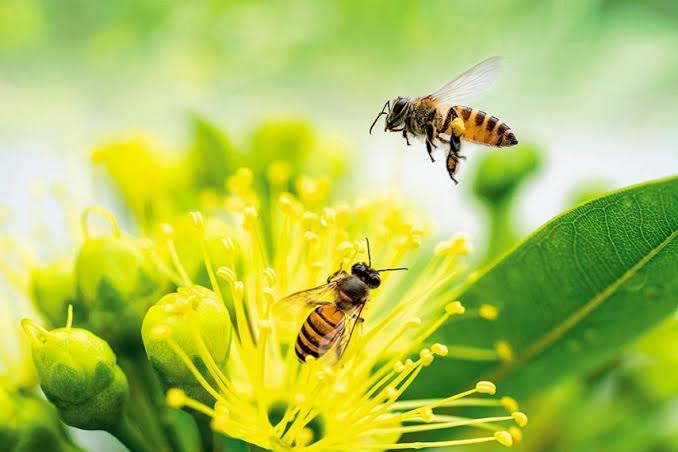Agro forestry Trees on the landscape
Until relatively recently, the problems of agricultural production and deforestation were viewed separately. Thus, inadequate food production was seen to result from shorter fallows, inadequate use of improved technical packages, lack of incentives due to artificially depressed food prices, and so on. Deforestation, on the other hand, was thought to result from excessive cutting of wood for fuel. A growing consensus, however, now considers food and tree problems to be intimately related. For example, it is understood that most trees are not cut to provide fuel, but to clear land for planting crops. More important is the recognition that deforestation is an important reason for declining food output. It is hardly coincidence that many famine areas are those where trees and shrubs have largely disappeared.
In Africa, for example, production over the long run depends almost as much on trees as on seed, fertilizer, and other conventional inputs. Traditionally, most African farmers have cleared land, used it until fertility began to decline, and then moved on. Trees were important throughout this cycle. While the land was being used to produce food, for example, surrounding areas of tree cover served to prevent wind and soil erosion.
Often, some trees were left scattered across the farm itself. Acacia albida,for example, was known to provide a variety of benefits. During the hot season, animals attracted to the tree's shade would leave manure behind, increasing soil fertility. The tree's roots would fix nitrogen, and its fallen leaves would add organic matter to the soil. Competition with crops was limited since Acacia albida sheds its leaves during the growing season and draws its moisture from levels which the roots of food crops do not reach. Trees such as this were valued highly by farmers as "good neighbours" for crops and livestock. As the soil became exhausted and the farmers moved on, a variety of trees and shrubs would quickly reestablish itself. During the land's fallow period, the roots of this woody vegetation would return leached nutrients to the topsoil from layers of earth deep below the surface. Disintegrating leaves and twigs would restore the crumbly soil texture necessary for proper infiltration of rainwater. Eventually, the soil's productivity would be restored, and farmers would return Co grow crops there once again.
This cycle was interrupted when population pressures forced farmers to settle and to use land much more intensively. Fallows were shortened or eliminated, preventing the natural reafforestation that had been such an essential part of traditional agriculture. Trees that would formerly have been left in and around gardens were cut to provide firewood or to make way for more crops.
There is an added dimension to the problem in areas like the Sahel, where livestock occupies a central place in the farming system. With too many people come too many animals. These start by eating away the herbaceous ground cover, eliminating the best species first. The accessible parts of the trees are finished off next, after which herders must cut branches or pollard trees to provide feed. Eventually, both the ground cover and the trees are stripped away completely.
The results of both overcropping and overgrazing can be devastating. With too little humus, the soil loses its capacity to absorb water. Rain therefore washes across the surface of the land, carrying away precious topsoil. Erosion is made worse by the absence of trees that could break the flow of wind and water. The topsoil Chat remains is increasingly devoid of nutrients. At best, the land may be kept temporarily "alive" through the massive use of fertilizers. At worst, the land may die - and so may the people who work it.
Once ecosystems begin to collapse in this way, they are especially vulnerable to drought. Rather than being simply a hardship, bad rains can become a calamity. Many people now argue that this is what has happened in areas such as Ethiopia and the Sahel: people who were already using land in unsustainable ways were simply pushed over the edge by periods of inadequate rain ¹. There might have been less human suffering and less permanent damage to the land if traditional farming systems - including traditional trees and shrubs - had still been in place.
The above is an oversimplified picture of African farming systems. It remains true, however, that most traditional land use systems involve a strong interdependence among people, crops and/or livestock, and trees. This interdependence will long prevail. It may be in theory Chat African and Asian lands could be stabilized and made productive without trees through careful use of modern inputs and techniques. Nonetheless, most farmers and herders will indefinitely remain poised somewhere between the "traditional " and the "modern". To survive, they will need to retain or recreate farming systems in which trees occupy a central position.
It is relatively new to think of farming systems as including trees, or to plant trees with farming systems in mind. As recently as 1982, for example, a major study of farming systems made no mention of trees except as an "off-farm" source of fuel ¹. At the same time, most tree planting projects were assuming that farmers would grow woodlots on marginal land far from their crops
alexanderwander14@gmail.com
swtxander.blogspot.com
My Environment is My responsibility
Am a student for Nature




Comments
Post a Comment